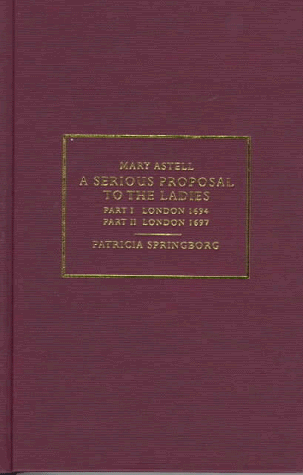Pickering Women's Classics
1 total work
The first part of this work (1694) argues that wealthy women who do not intend to marry should use their dowries to finance residential women's colleges to provide the recommended education for upper- and middle-class women. The second part of this work (1697) is also included here.
